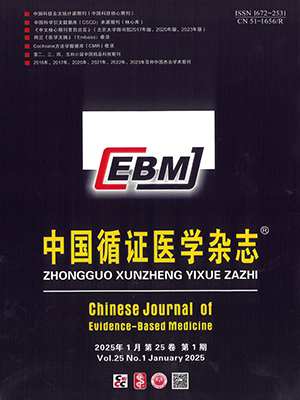| 1. |
Hamm CW, Bassand JP, Agewall S, et al. ESC Guidelines for the management of acute coronary syndromes in patients presenting without persistent ST-segment elevation: The Task Force for the management of acute coronary syndromes (ACS) in patients presenting without persistent ST-segment elevation of the European Society of Cardiology (ESC). Eur Heart J, 2011, 32(23): 2999-3054.
|
| 2. |
Thygesen K, Alpert JS, Jaffe AS, et al. Third universal definition of myocardial infarction. Eur Heart J, 2012, 33(20): 2551-2567.
|
| 3. |
Vitek L, Jirsa M, Brodanova M, et al. Gilbert syndrome and ischemic heart disease: a protective effect of elevated bilirubin levels. Atherosclerosis, 2002, 160(2): 449-456.
|
| 4. |
Vitek L, Schwertner HA. The heme catabolic pathway and its protective effects on oxidative stress-mediated diseases. Adv Clin Chem, 2007, 43: 1-57.
|
| 5. |
Novotný L, Vítek L. Inverse relationship between serum bilirubin and atherosclerosis in men: a meta-analysis of published studies. Exp Biol Med (Maywood), 2003, 228(5): 568-571.
|
| 6. |
Lin JP, Vitek L, Schwertner HA. Serum bilirubin and genes controlling bilirubin concentrations as biomarkers for cardiovascular disease. Clin Chem, 2010, 56(10): 1535-1543.
|
| 7. |
Canpolat U, Aytemir K, Yorgun H, et al. Association of serum total bilirubin levels with the severity, extent and subtypes of coronary atherosclerotic plaques detected by coronary CT angiography. Int J Cardiovasc Imaging, 2013, 29(6): 1371-1379.
|
| 8. |
史连义, 周志伟, 田雪梅, 等.冠心病患者血清总胆红素水平的meta分析.中国老年学杂志, 2012, 32(4): 1368-1370.
|
| 9. |
Gullu H, Erdogan D, Tok D, et al. High serum bilirubin concentrations preserve coronary flow reserve and coronary microvascular functions. Arterioscler Thromb Vasc Biol, 2005, 25(11): 2289-2294.
|
| 10. |
Wei S, Mao L, Liu B, et al. Serum biomarkers and the prognosis of AMI patients. Herz, 2014, 39(3): 384-389.
|
| 11. |
Kuwano T, Miura S, Shirai K, et al. Serum levels of bilirubin as an independent predictor of coronary in-stent restenosis: a new look at an old molecule. J Atheroscler Thromb, 2011, 18(7): 574-583.
|
| 12. |
田刚, 张春晓, 孙中华, 等.冠状动脉支架置人术后支架内再狭窄的相关因素分析.山东医药, 2012, 52(34): 53-55.
|
| 13. |
Wu TW, Fung KP, Yang CC. Unconjugated bilirubin inhibits the oxidation of human low density lipoprotein better than Trolox. Life Sci, 1994, 54(25): P477-P481.
|
| 14. |
Wu TW, Fung KP, Wu J, et al. Antioxidation of human low density lipoprotein by unconjugated and conjugated bilirubins. Biochem Pharmacol, 1996, 51(6): 859-862.
|
| 15. |
Boon AC, Hawkins CL, Bisht K, et al. Reduced circulating oxidized LDL is associated with hypocholesterolemia and enhanced thiol status in Gilbert syndrome. Free Radic Biol Med, 2012, 52(10): 2120-2127.
|
| 16. |
Yoshino S, Hamasaki S, Ishida S, et al. Relationship between bilirubin concentration, coronary endothelial function, and inflammatory stress in overweight patients. J Atheroscler Thromb, 2011, 18(5): 403-412.
|
| 17. |
Kamisako T, Masuda S, Tanaka Y. Relationship between serum bilirubin and remnant lipoprotein cholesterol level. Clin Lab, 2013, 59(3-4): 435-438.
|
| 18. |
McConnell KJ, Olson KL, Delate T, et al. Factors associated with recurrent coronary events among patients with cardiovascular disease. Pharmacotherapy, 2009, 29(8): 906-913.
|
| 19. |
Dudnik LB, Azyzova OA, Solovyova NP, et al. Primary biliary cirrhosis and coronary atherosclerosis: protective antioxidant effect of bilirubin. Bull Exp Biol Med, 2008, 145(1): 18-22.
|




